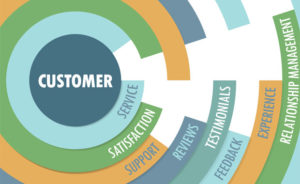There’s an interesting article about customer service agents in the latest Harvard Business Review, authored by Matthew Dixon and associates at CEB, that I think is worth a look.
It’s widely understood that new customer service channels such as social, email, knowledge bases, and the like have left the service agent with harder problems to solve. Those channels are here to stay because when they work well, they solve problems for pennies. It can cost many dollars to resolve an issue through the efforts of conventional agents. So, there’s a decided bias for self-service where possible.
However, we need to ensure that there are graceful transitions from the channels to agents, or we risk a backlash. As a matter of fact, some amount of backlash in the form of irate customers confronting agents is par for the course — but how are we preparing for this?
The Wrong Stuff
We’re mis-staffing the call center for today’s activity, the HBR article suggests. I say mis-staffing rather than anything else because the staffing model is simply old; it’s built on the assumptions of another time, and it no longer addresses service realities.
The conclusions of a study of more than 1,400 service agents from diverse industries and many countries, summarized in the HBR article, are interesting to say the least. The study groups agents into seven different buckets and characterizes them, demonstrating the misalignment of skills to need.
The predominant type of agent in the study, labeled “the empathizer,” makes up 32 percent of agents covered in the study. An empathizer “enjoys solving others’ problems; seeks to understand behaviors and motives; listens sympathetically,” says the report.
That’s fine, and it harks back to a time when all sorts of easy and hard problems visited the call center. However, the agent type that’s more effective for today’s needs is labeled “the controller,” which the study describes as “outspoken and opinionated; likes demonstrating expertise and directing the customer interaction.”
Unfortunately, controllers make up only 15 percent of agents in the study, and while they are ranked No. 1 in effectiveness, they are ranked No. 3 in service manager desirability. The reason is simple. Controllers, like good salespeople, go off script; they relish their freedom to roll up their sleeves and solve a problem, and they aren’t terribly enamored of following all the rules set down in a manual.
Here’s the rub: By the time a do-it-yourself customer gives up on tracking a problem through a maze of sometimes contradictory or confusing information on the Web, that individual isn’t likely to want a long empathetic encounter with a service agent.
Such a customer is much more likely to want someone to FIX the problem, pronto. That’s where the disconnect happens. Controllers take charge and provide the comfort of a quick resolution with little fuss. Empathizers, despite their best efforts, might not.
The Essential Human Factor
What to do? We could get more controller types into the service mix, the article suggests, but that would necessitate a change of mindset in the hiring process and even in the job description. If you advertise jobs for self-starters or use similar descriptions, you have to be able to let the employees you hire, well, you know, self-start. That’s a big effort for managers used to controlling and scripting the action, but it’s increasingly apparent that it’s a change that is needed.
There are other approaches for making changes in the service department suggested in the article, and I encourage you to read and consider them. In an age of job depletion due to automation, this article is refreshing because it pinpoints one area where human interfaces are needed, as well as a mode of working that shows how technology can augment human actors.
























































